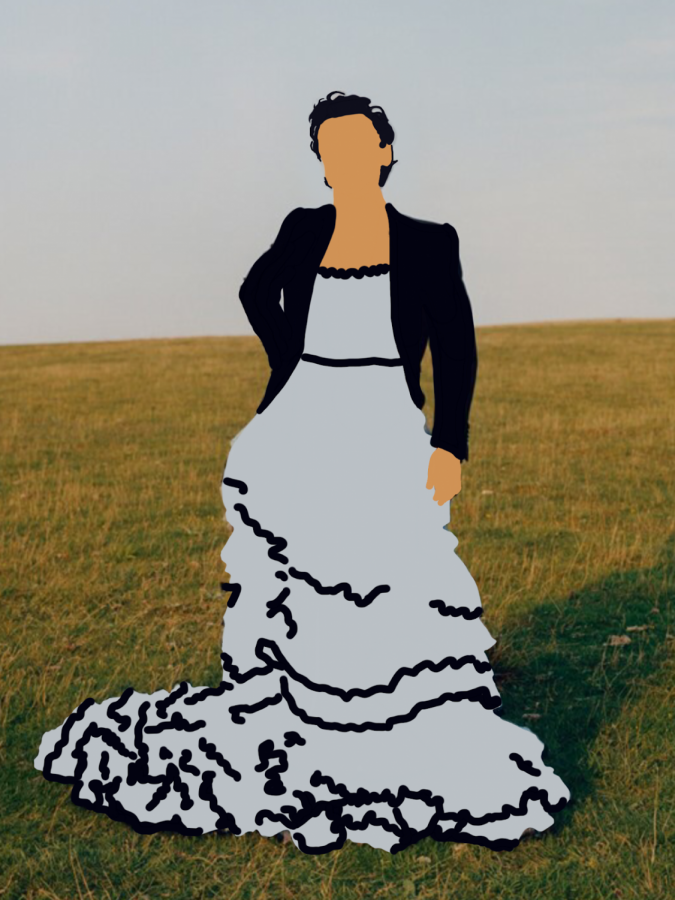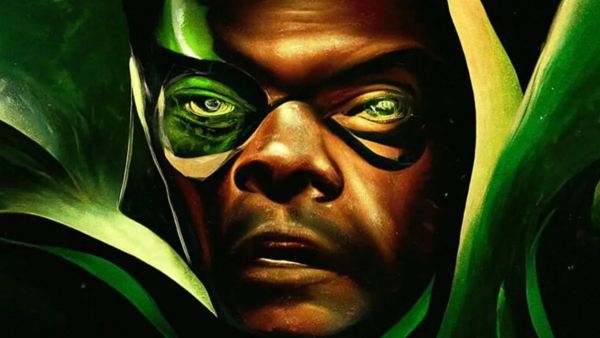Clothes have no gender
Clothes can be a form of nonverbal expression for many teens and adults. Every day we choose what to put on and how we will present ourselves for the whole day. For a lot of us, clothing and identity go hand in hand. “On days when I feel like I can’t put together an outfit that I feel comfortable in, it’s just not a good day… I just don’t feel like myself…” Molly Shoffner (‘21) tells me. Shoffner shows me a sweatshirt that they tie-dyed. They said that it went from just being an old sweatshirt to their favorite piece after its transformation. Our clothing is truly an extension of who we are.
Clothing is a reflection of our personality and inner self, not our gender. By assigning articles of clothing a gender and declaring them masculine or feminine, we erase everything in between. Gender is not binary, so why do we so desperately try to force clothing to be? Clothing’s assigned gender has nothing to do with the clothing itself; its binary conformity is the product of our narrow-minded society.
“We’ve been misled to believe that random and arbitrary articles of cloth, textile, colors, scent, have a gender– they do not” says nonbinary activist, writer, and performance artist Alok Vaid-Menon, in their Business of Fashion speech on Fashion’s Genderless Future in 2019.
Skirts and high-heels, two articles of clothing that are seen as femme in modern western culture, have only recently been viewed in that way. Skirts have been a staple for both men and women since the dawn of time, or at least since humans started wearing clothing. In almost every ancient society, and most traditional cultures, skirts have been worn by if not men and women, men. Along with skirts, dresses were also widely worn by men, for example, Scottish kilts. Pants were only introduced into these societies when men began riding horses. Since women did not ride horses, pants became associated with men and masculinity. High-heeled shoes were also created to make riding horses more efficient. Even today, in many non-western cultures, skirts and dresses are not seen as a gendered clothing item: for example, kimonos are worn by both men and women in Japan. Transgender Bothell senior, Sid Mydland (‘21) tells me, “There shouldn’t really be a relationship between clothing and gender… anyone should really be able to wear whatever they want”.
Over the past few years, androgynous style has been on the rise in the high fashion industry. Luxury brands like Vogue, Louis Vuitton, Burberry, and Gucci receive high praise and esteem for their cutting edge runway looks. While these outfits are eye-catching and inspiring, we must remember that gender-fluidity is not a seasonal fashion trend. Androgyny is not a new concept, and it is not going “out of style” anytime soon. “You’re dressing like queer teenagers, it’s not very… inventive,” says Mydland
Another issue with high fashion androgyny is that almost all gender-neutral ensembles look more or less the same. In actuality, gender-neutral fashion has no rules: it is one of the most abstract genres of fashion and yet, the entire subculture of nonbinary fashion is represented by a specific look in the designer world. Shoffner describes it as “a cookie-cutter of the same edgy, androgynous fashion”. “Androgyny is such a big idea and spectrum and then what we see from the [high fashion] media is the same sort of thing” they add. It’s almost an insult to the extraordinary and sophisticated concept that is nonbinary and queer fashion to co-opt this style without reflecting and acknowledging its real roots in the nonbinary community. The fashion industry continues to accept credit for androgynous fashion while indirectly erasing the communities that created it in the first place.
I find it odd that while these brands go out of their way to keep up with the fast-paced high fashion world, creating full shows consisting of only gender-neutral looks, their stores are not receiving the same attention. Runway looks typically don’t make it off the runway and find their way into the average consumer’s closet, so it would be expected that if these brands are participating in gender-neutral fashion and profiting off of it, they should at the very least be actively making an effort to sell a range of clothing that caters towards the trans and nonbinary communities. They claim to be inclusive and progressive, though they are not even serving the community that they are supposedly representing. Although the space between high fashion designers, manufacturers, and retailers is large and disconnected to some degree, the lack of inclusion does not go unnoticed.
On another note, the December 2020 Vogue cover sparked major controversy as it was an image of Harry Styles wearing a dress. He received huge amounts of criticism for “being too feminine” and love for “breaking gender norms.” Mydland says, “I’ve grown to expect that [criticism] because it comes out of the same place that transmisogyny does.” He defines transmisogyny as “the hatred of transgender women specifically… [transphobic people] see trans women as men in dresses…”. The criticism he got was quickly drowned out by praise from his fans and even the people who weren’t his fans. However, the overwhelming support Harry Styles received raises another point: Why is he, a cisgender white man, receiving more recognition than the countless nonbinary and people of color who came before him? “I’m happy that he [Harry Styles] is doing what he wants but also people do ignore people of color who are gender nonconforming,” Mydland tells me. When asked if Harry’s Vogue shoot had a negative or positive effect on the trans community, Mydland had mixed feelings, “…it’s aligning him with the trans community… people are going to then misdirect their anger towards trans people… but it was positive to show someone in the mainstream who’s doing something nonconforming”.
While it is exciting to celebrate celebrities who have the bravery to oppose the binary clothing that is forced onto us, it is important to remember that they did not invent this; they are merely the ones in the public eye. “Let’s stop congratulating people for being the first, and instead question what made their journey so difficult to begin with?” says Alok Vaid-Menon in their speech. Nonbinary and transgender people have been dressing like this forever and it’s time that they get the same recognition as people like Harry Styles.
Being small in numbers, the nonbinary and trans communities at our school face a huge amount of erasure every day. I asked the trans and nonbinary students how much they felt represented at school. “The climate of our high school, I just don’t feel represents everyone who’s there…” Shoffner tells me. Mydland agrees, saying, “I feel not very represented at Bothell.”Mydland is only taking a few classes at Bothell but “…if [he] were in more classes right now, it would be not great…”.
Being online is isolating as it is, but all Bothell students deserve to feel like they are a part of our community regardless of gender, race, sexuality, anything. So how can we, as a school, do better? “I wanna see the people who make up Bothell for what it is and not just what we’re seen as,” Shoffner suggests. “We need to represent the people who are our school… because if we are representing the same people over and over again, then everyone else just feels like they’re not part of the school,” Shoffner says, speaking from their own experience at Bothell. “You’re becoming yourself as you’re in high school and so it’s really important to want to be there and feel like you are a part of the school…” Shoffner adds.
Mydland says that one small thing that Bothell can do to support their community is to hang a Pride flag in the cafeteria, as the president of Bothell’s GSA (gay-straight alliance) that has been one of his goals for several years. Students that identify in the nonbinary and trans spectrum deserve recognition and visibility as an important and wanted part of our Bothell community. Shoffner explains “knowing that there’s so many different types of people that can exist at our schools makes everyone feel comfortable in the end… you’re not upholding the ‘build, belong, become’ Bothell if you’re not welcoming and representing these people…” We are Bothell, build, belong, become. We can do better.







